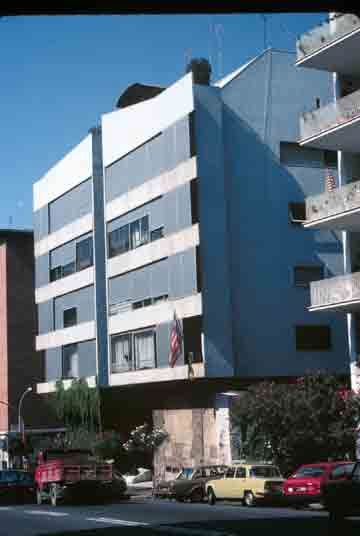One of Rome's least prominent--and probably least visited--memorials is located on the Lungotevere Arnaldo da Brescia, just steps from the Tevere, near Ponte Pietro Nenni--a 5-minute walk from bustling Piazza del Popolo.
There, on June 1924 (two years after the March on Rome), while walking along the Lungotevere Arnaldo, the Italian politician Giacomo Matteotti was waylaid, thrown into a Lancia Lambda, and stabbed to death. Of the 5 men involved, one was a prominent member of the Fascist secret police. The extent of Benito Mussolini's involvement is not clear. [See the RST post on David Kertzer's book The Pope and Mussolini for more information.]
Matteotti was an anti-Fascist socialist--a member of the Unitary Socialist Party--and a deputy in the parliament. Ten days prior to his murder, he had spoken in the parliament, concerned about violence that had occurred during recent elections and critical of the anti-democratic Acerbo law, which had assigned 2/3 of the seats in parliament to the party of Mussolini--the largest in the body--which had won 35% of the vote.
The monument to Matteotti occupies a semi-circular green space on an elevated terrace above the river. The space can be accessed by the Lungotevere or from the river bank, via a substantial staircase that appears to be a part of the memorial.
The original plaque was smashed in January 2017, 6 months before we visited the site and these photos were taken.
Bill










